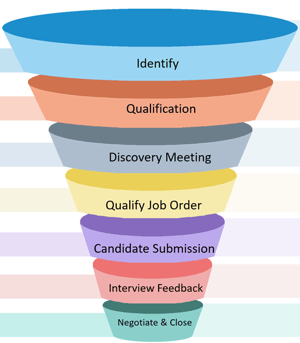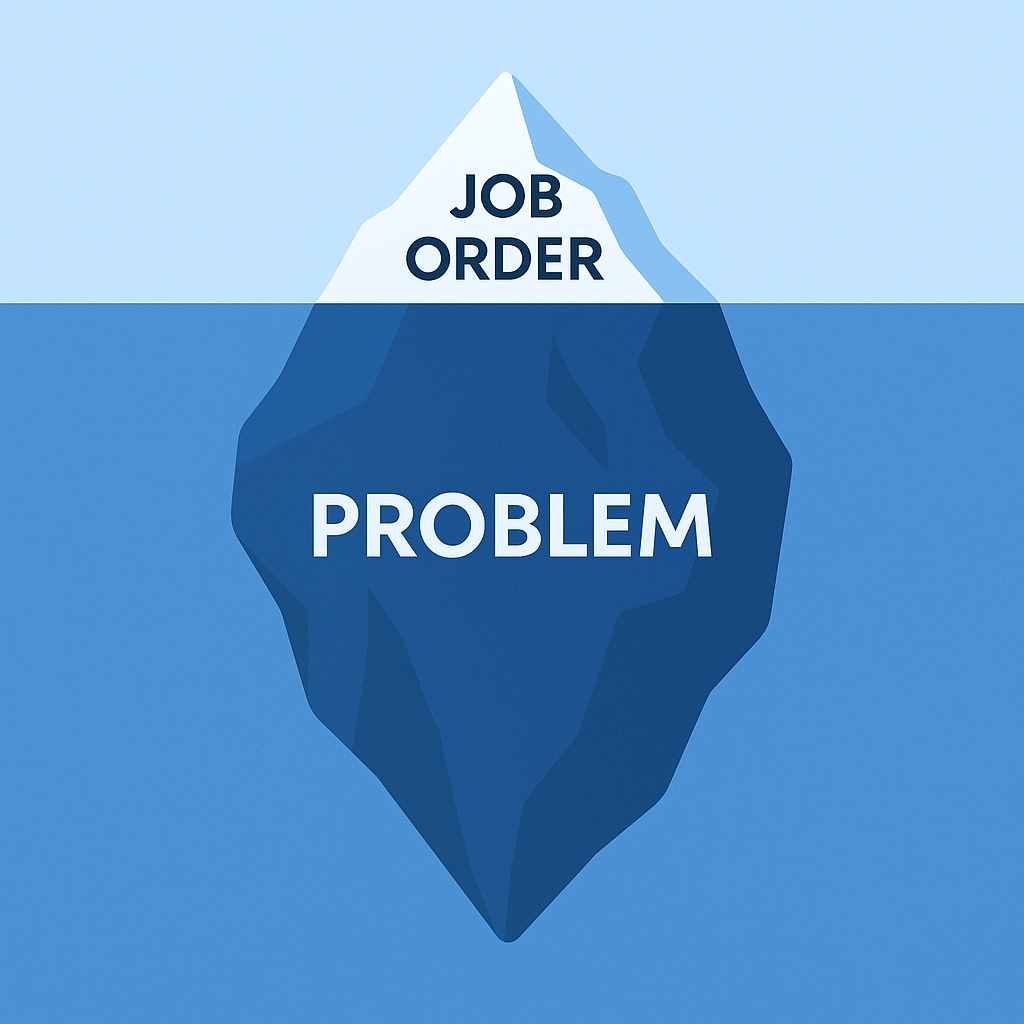Selling With Your Consultant
In my previous post, How to Prevent Unexpected Contract Terminations, I shared how systemizing consultant and client check-ins at key milestones...

As a sales leader, missing your number sucks. Even worse is delivering the news to your CEO. Talk about a quick way to kill your credibility! Does this conversation sound  familiar?
familiar?
Business Owner/CEO: “How are the numbers looking this month/quarter?”
VP of Sales: “Things are going pretty good, we just need to close a couple of more deals to hit our number.”
CEO: “So which is it, are things going great or do you need to close more deals?”
VP of Sales: “Ah…well….I guess we need a few more deals”
As you can probably image, this type of conversation doesn’t instill confidence in the CEO. And it certainly doesn’t make the CEO happy knowing they’re going to surprise the board with disappointing sales results. In this day and age, if your CEO is put in a position where they’re surprising their board with under performing results, they could be hitting the unemployment line.
As a sales leader, what can you do to ensure your sales forecast is accurate? Here are three common sales forecasting mistakes and how to avoid them.
Sales Forecasting Mistake #1: Running the Sales Pipeline Review Call
I have been part of more than my fair share of painful sales pipeline review calls. I’m talking about those calls where the sales manager judges each sales opportunity based on his or her gut instinct and then they decide, based on how they’re feeling in that particular moment, which deals belong in or out of the sales forecast. This is a dangerous approach that seldom results in an accurate sales forecast. There are two common reasons why sales managers base their sales forecast off gut instinct.
In many instances the sales manager lacks an understanding for sales process and therefore fails to base their sales forecast off of real sales data. In this case they rely on their gut instinct because they don't understand sales process and/or they have not yet adopted a sales process with clearly defined stages and exit criteria.
In the second scenario the sales manager and their organization may have a sales process but it's not a buyer aligned sales process. In this instance the sales manager can base his or her sales forecast off of real data from their CRM and their sales process. However, because their sales process fails to account for the buyer's journey, the sales manager bases their sales forecast exclusively off of the activities the sales rep has completed, not the steps and activities the buyer must complete in their buying process. In this instance the manager knows what the sales rep has done and needs to do but they have no idea what steps the buyer must complete for the deal to close.
I’ve also seen sales managers push deals into a sales forecast that don’t belong there. They say “Dan, why do you have this deal at 30%? Put it at 80%”. This naturally makes their sales forecast look better to upper management but it doesn’t improve the probability of the deal closing and the forecast coming to fruition. It also leaves sales reps wondering “what in the heck just happened?”
Instead of telling reps what you want to see in their pipeline and changing the probability-to-close percentage with those opportunities, sales leaders should be empowering their reps to self-diagnose their sales pipeline and prescribe specific behaviors and buyer actions that will advance their opportunities down the funnel. Here are a few examples to consider:
Sales Forecasting Mistake # 2: Tracking Activity Instead of Measuring Pipeline Progression
As I mentioned previously, most staffing firms don’t have a clearly defined sales process and those who do often fail to properly define the stages and incorporate verifiable outcomes. The net result is a sales organization and sales managers who simply track activity. They track sales activity metrics like:
While tracking these sales activities is good, mistaking sales activity tracking for sales forecasting accuracy is not. The reason is increasing activity level does nothing to increase the likelihood of the deal closing. Increasing sales activity does not imply the deal or the customer is progressing "down the funnel." If you were to base your sales forecast off of sales activity alone it would be way off the mark.
Meeting with a new prospect doesn’t mean they’re ready to buy. Presenting a candidate to a client also doesn’t mean they’re ready to buy. Sales forecasting needs to be tied to how customers buy. These steps should be observable and quantifiable.
For example, what close probability percentage would you assign to the following opportunities?
If you were to apply a forecasting methodology that focuses exclusively on activity you would find that all three of these would have the same close probability. But if you tie buyer behavior and the actions they complete to the forecasting methodology you would have very different close probabilities associated with each.
Sales Forecasting Mistake #3: Lack of Sales Process Adoption
It is no surprise that staffing companies who struggle with sales forecasting also struggle with sales process adoption. The two really go hand in hand. For many sales reps, once they enter a job order into their CRM or ATS the mindset is they’re “throwing the job order over the wall” for the recruiters to work on. For many there is an unconscious belief that it is now up to the recruiters to fill the order in which from that point forward there is very little to no documentation of the discussions that take place including the decisions that are made between the sales rep and the customer (why they’re passing on a candidate, why they want to see more candidates, etc.). There is no change in the deal lifecycle stage nor is there documentation or transparency because many salespeople believe if they document notes and next steps in the system they will be put under a microscope and the quality of their work will be scrutinized not only by their manager but by their peers.
The real root cause of the issue here is a management issue. What I have seen time and time again is either A.) the sales manager doesn't hold team members accountable to CRM/ATS documentation because that is "micro managing" (B.S.) or B.) when the sales leader and/or business owner don’t understand the true value of a CRM including the sales process and how to measure and track the health and velocity of a sales pipeline, the CRM becomes a dumping ground.
A properly configured CRM system (assuming you have one) eliminates most of the work associated with producing a sales forecast. Dashboards can be created to show your deals by stage and probability to close. Buyer behavior including the steps and actions they have committed to and still need to complete serve as the milestones and basis for the forecast, not the sales manager or sales rep's “gut instinct.” The sales manager can then provide the sales rep with pipeline specific sales coaching. This helps eliminate the excuse, “I haven’t updated my opportunity in the system yet” from your reps.
How do you go about sales forecasting in your staffing firm? What sales forecasting mistakes have you learned from? What do you find most challenging about sales forecasting? Let's start a discussion in the comments section below.
If you want to improve sales performance, download the free eBook titled "The Definitive Guide to Building a Buyer Aligned Sales Process."

In my previous post, How to Prevent Unexpected Contract Terminations, I shared how systemizing consultant and client check-ins at key milestones...

About a year ago, I was serving as the fractional revenue leader, managing sales and recruiting for a client.

If you’ve worked in staffing long enough, you’ve been trained to chase job orders.